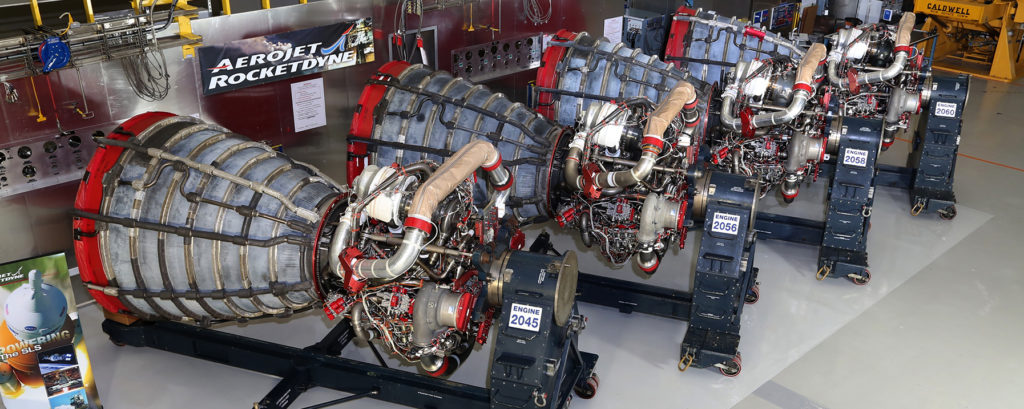Today, Lockheed Martin announced an intent to acquire Aerojet Rocketdyne in a $4.4 billion cash transaction. The two companies entered a definitive agreement which is predicted to close in the second half of 2021. The companies have a long working relationship, most notably in how Lockheed uses Aerojet Rocketdyne’s propulsion systems in their missiles, fire control and aeronautics products.
Lockheed would be paying a 33 percent premium on Aerojet Rocketdyne’s recent stock price at $56 per share to boost its own rocket capabilities, allowing the company to improve its competitive standing with the U.S government against new companies like SpaceX and Blue Origin.
Lockheed and Aerojet Rocketdyne use 3D printing in a variety of ways, including filing a patent for a 3D printer that prints diamonds, but the implications for the deal will primarily bolster the use of metal additive manufacturing (AM) for the production of aerospace components.
And the two companies are already using high-end metal AM to build complex components for spaceflight. For example, as part of a deep space exploration contract won from NASA in 2006, Lockheed is using 100 3D printed parts for the Orion crew and service module of the Artemis I mission, and they are using 200 3D printed parts for the spacecraft that will be used for the Artemis II mission.
Another example comes from June of this year, when it was reported that NASA also wants Aerojet Rocketdyne to build six new expendable RS-25 engines using 3D printing among other advanced manufacturing techniques to reduce cost and production time for NASA’s Space Launch System series of unmanned and manned launches planned for the near future.
Lockheed is no stranger to working with companies that leverage advanced AM technologies for aerospace. Most recently, Lockheed hired startup Relativity Space for a NASA 3D printing project to build 12 different cryogenic fluid management systems on a single orbiting craft. Lockheed and NASA are designing the cryogenic systems and Relativity Space will be the launch provider for the project, which is part of NASA’s Tipping Point program.
How will the acquisition affect space engineering and 3D printing?
The answer is tricky. Sometimes corporate acquisitions can have deleterious effects on workers with respect to altering employee contracts regarding wages, benefits, and pensions. The wealth gained by shareholders from such acquisitions and mergers does not necessarily represent an increase in economic performance or efficiency of Lockheed. Sometimes acquisitions lead to downsizing and layoffs which could have a negative impact on employees.
However, the acquisition of Aerojet Rocketdyne by Lockheed could be a catalyst for organizing workers and managers in a concentrated unit for optimizing Lockheed’s chances at remaining competitive against newcomers like SpaceX, Astra, and Blue Origin. In this respect the acquisition could bolster the careers of employees, especially considering that implementing new technologies like 3D printing at a higher scale could stimulate Lockheed’s investment in human capital and firm-wide skill upgrading.
Three RS-25 engines are inspected at Aerojet Rocketdyne’s facility located at NASA’s Stennis Space Center in Mississippi (Credit: Aerojet Rocketdyne)
First, the deal will have to clear intense probing by the SEC and possibly the Department of Justice Antitrust Division, who track companies and sometimes prevent acquisitions and mergers based on anti-trust concerns. This is no small matter, as Lockheed Martin is the largest defense contractor in the world and has been for some time, particularly after adding the “Martin” in its name in 1996 via a merger with Martin Marietta.
When it attempted to merge with one of the top five biggest weapons companies, Northrop Grumman, in 1998, Lockheed backed down in face of government opposition on antitrust grounds. In 2015, there was substantial review from eight different jurisdictions, including the Chinese government, to allow Lockheed to purchase leading defense contractor, Sikorsky Helicopters. Aerojet Rocketdyne is itself the formation of a 2013 merger of two large companies, GenCorp, parent company of Aerojet, with Pratt & Whitney Rocketdyne.
In other words, neither massive mergers or antitrust reviews are new in military manufacturing in the U.S. If the merger comes to pass, it will mean that Lockheed Martin will have even more sway in the U.S. government, which, as the company’s biggest customer, already represents almost 70 percent of its revenue.
We will keep you updated as the story unfolds.
